Shadow of the Tomb Raider: A Ray Tracing Investigation
Critically-acclaimed game Shadow of the Tomb Raider has been updated to receive support for both DirectX ray tracing shadows and Nvidia's DLSS upscaling technology. It's been seven months since ray tracing was shown off in this title and a good six months since the game was released, but hey, the feature was added in eventually and it's a very good game, we must add.
The inclusion of ray tracing in Shadow of the Tomb Raider marks the implementation of the third and final ray tracing technique we currently have at our disposal. Battlefield V uses ray traced reflections, Metro Exodus uses ray traced global illumination, and Shadow of the Tomb Raider uses ray traced shadows. In the future we'll likely see games that use a combination of these techniques but right now each game is choosing one of the three and after today we should have a good idea at how each works to improve visuals.
Accessing ray tracing in Shadow of the Tomb Raider is quite easy. There's no need for a driver update, all you require is the latest game patch, which isn't even that large. From there, you can launch the game and choose between three ray traced shadow modes: Medium, High and Ultra.
The game provides a decent description of what each mode does. With Medium you get ray traced shadows for selected point lights, plus regular shadowing techniques for the rest of the game. With High, shadow maps start getting replaced in favor of more ray tracing from spot and directional lights, including the sun. And then with Ultra you get more shadows and additional rays. DLSS has its own setting that can be activated as well.
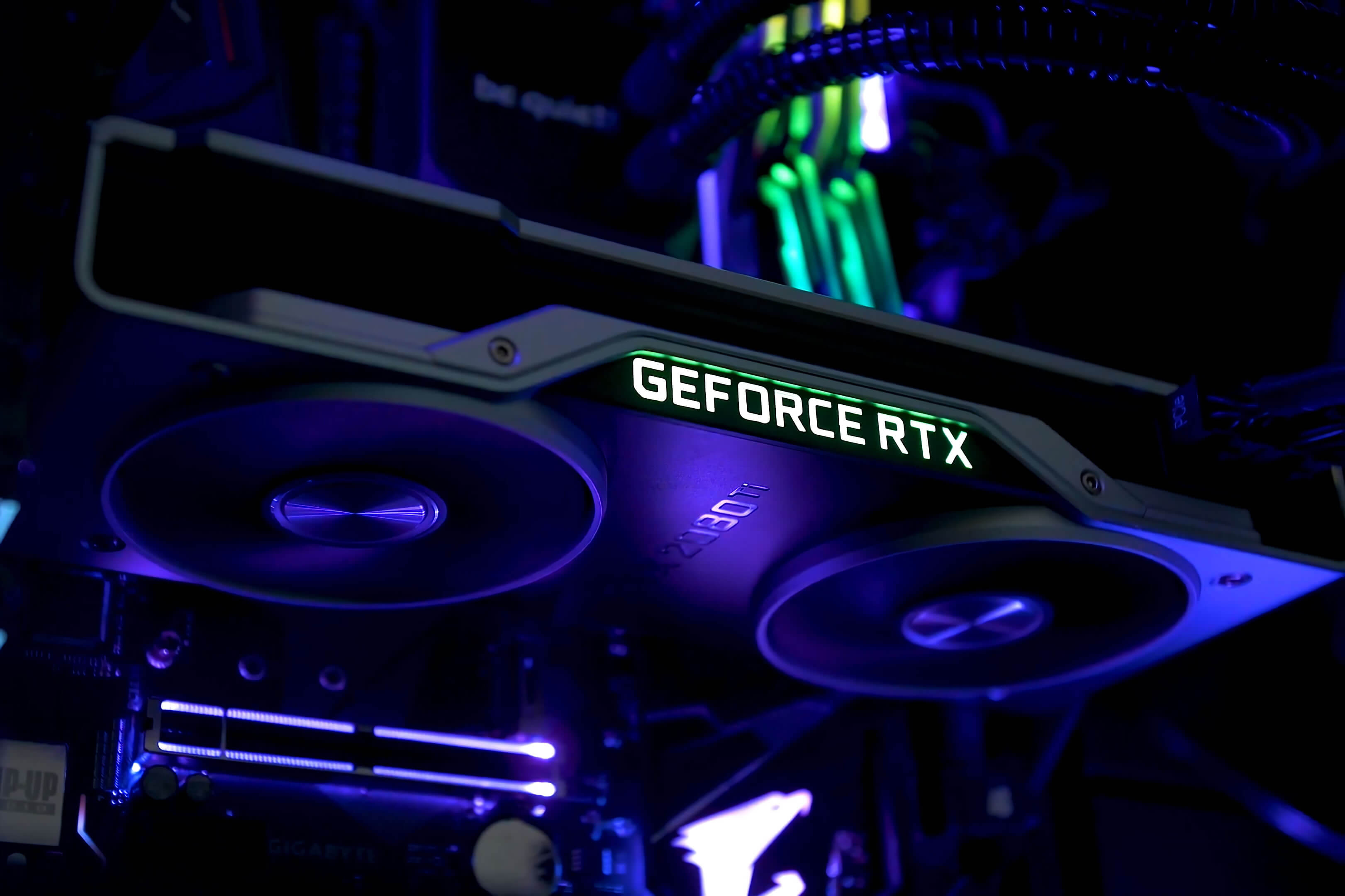
For the following tests and comparisons, we've set the game to use the maximum quality settings, so that's a level above the Highest preset. After all, if you're using ray tracing you're after premium graphics, so you should already have everything cranked up to the best graphics possible. All testing was done on a Core i9-9900K rig, with game footage captured using the RTX 2080 Ti at 4K. Performance was tested for all RTX GPUs at different resolutions as well, which we'll get to later on.
Visual Comparison
The first thing to note is that the Medium ray tracing setting doesn't affect the quality of shadows in most situations, because it only ray traces point light shadows. So this would be a light from a fire or lamp, for example. When outdoors, the medium mode uses standard Ultra-quality shadow maps, because shadows from the sun are not ray traced here. This is why in a lot of these comparisons there is no appreciable difference between DXR off and DXR medium.
Click on all screenshots for full resolution 4K images

Where you start to notice a difference is with the High and Ultra modes. Depending on the area, the difference is very noticeable, with ray traced shadows looking softer thanks to its more accurate distance-based shadowing. Ultra shadows in this game look good, they are sharp across most elements, but ray tracing is an upgrade if accuracy is what you like. In this scene for example, shadows cast from overhead foliage are soft due to the large distance between the foliage and the ground, while Lara's own shadow is much sharper as it's closer to the shadowed surface.
While I like the ray traced shadow presentation and believe it looks more accurate, like with other ray traced techniques the change might not be something everyone likes. As most games use sharper shadows, this distance-based system might be a bit jarring or look worse if you prefer standard sharper shadows.

One thing is clear though: the High shadow mode is not good. To us it looks worse than non ray traced shadow due to a lack of shadow density. For some reason, the High mode just seems to remove a lot of shadows, particularly from overhead foliage, which is obviously not the intended presentation looking at both Ultra regular shadows, and Ultra ray traced shadows. The ray count limitation here is too tight and while the shadows that are cast look better and more accurate, removing shadows to get this effect is not a good compromise.

Ray traced shadows have a number of other advantages. The game already appears to use distanced based shadowing for some dynamically generated shadows without ray tracing, but there's a fair bit of aliasing present even using the Ultra mode. When switching ray tracing on, this aliasing disappears and you get a much cleaner presentation with better distance calculations. It's with these shadows, including Lara's shadow which suffers from the same issue, that ray tracing is the biggest upgrade.
In many areas, ray tracing also delivers more depth to the scene with better and more accurate shadowing of objects such as handrails, rocks, tables and so on. Again, without ray tracing the scene still looks excellent but ray tracing steps it up a notch.
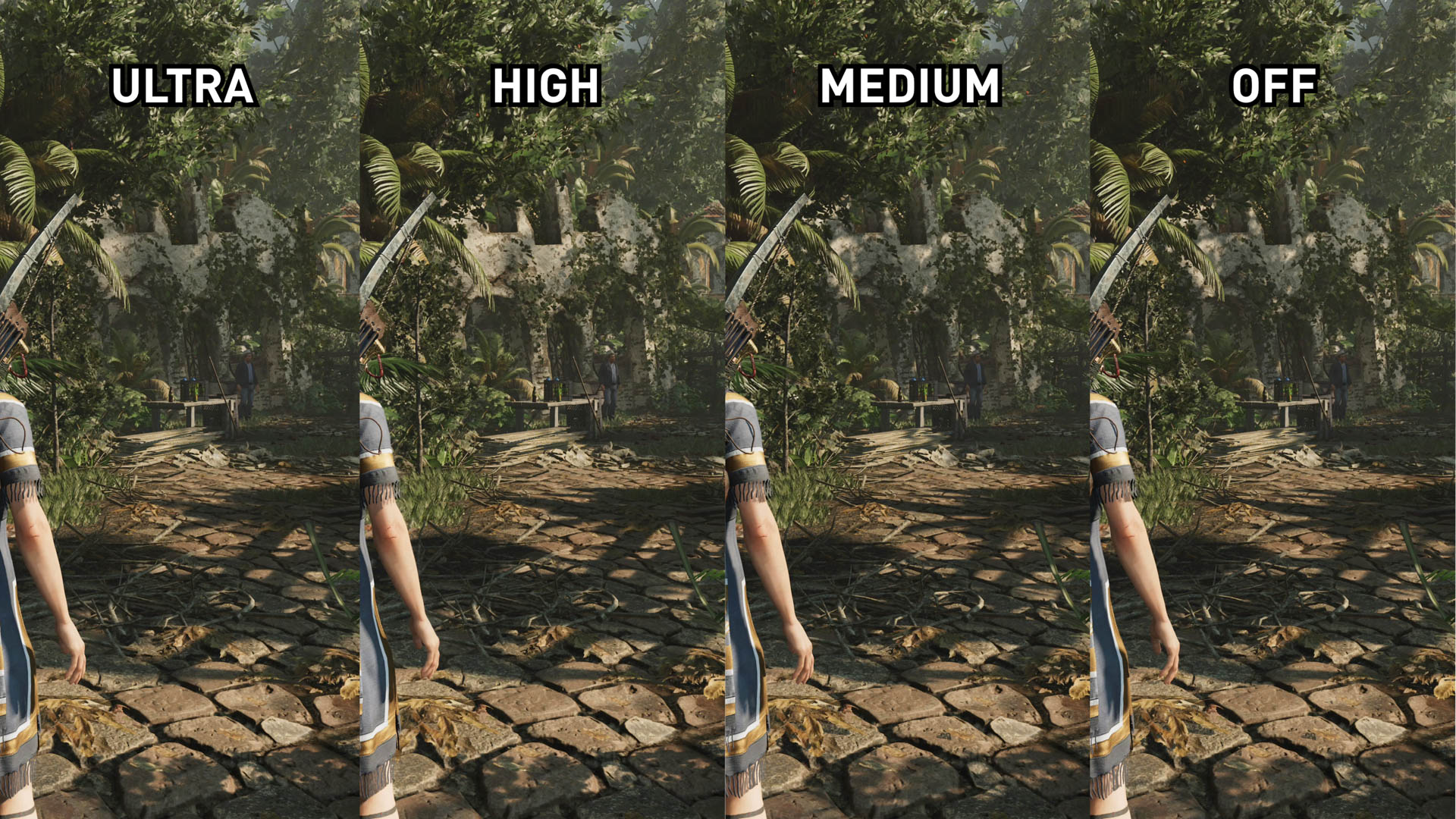
And then here we can see where point lights come into play, which is an effect you get with the medium mode enabled. Beside this fire there are actually no shadows cast with ray tracing off, but when switching it to medium, Lara immediately casts an accurate shadow onto the wall behind her. There's not much to be gained from higher modes with point light shadows, and there are plenty of other point lights throughout the game that do cast shadows even with ray tracing off, but this was one of the best examples I could find. Yeah, the developers probably could have implemented regular shadows for this light, but even then it wouldn't look as good as ray tracing.

While we have been talking a lot about the visual upgrades that ray tracing provides, there are also a decent amount of issues we noticed.
Looking at the high ray tracing mode again, there is a serious shadow draw distance issue. When you roam around large environments, there is an obvious, flat line transition between ray traced shadows and regular shadows that is visible and quite jarring. It's another reason we wouldn't consider using the high mode at all, not only are there fewer shadows in general, the transition line is just awful.
This obvious transition point isn't a problem on the Ultra ray tracing mode, but there is another issue at play here: shadow pop in. As you roam around, you can spot shadows magically appearing for some objects with no fade in. They just pop in out of thin air in the distance. In contrast, with ray tracing disabled there is still a limit to how far shadows are drawn, but there is a nice fade-in transition to these shadows as you move around, rather than a jarring pop-in. We'd say shadow draw distance with the ultra mode is similar to off in general, but the off mode clearly handles the transition more gracefully.
Then there are some instances where ray traced shadows don't work correctly. In this scene, the roofing on the left should be shadowing the wall with a pattern similar to the leafing on the roof. That's what you get with regular shadows, but with ray tracing it seems like the alpha texture is not being traced correctly so what we get is a large outline of presumably where the geometry is. It doesn't look right and doesn't make sense, although in other areas of the game this sort of alpha channel is handled properly.
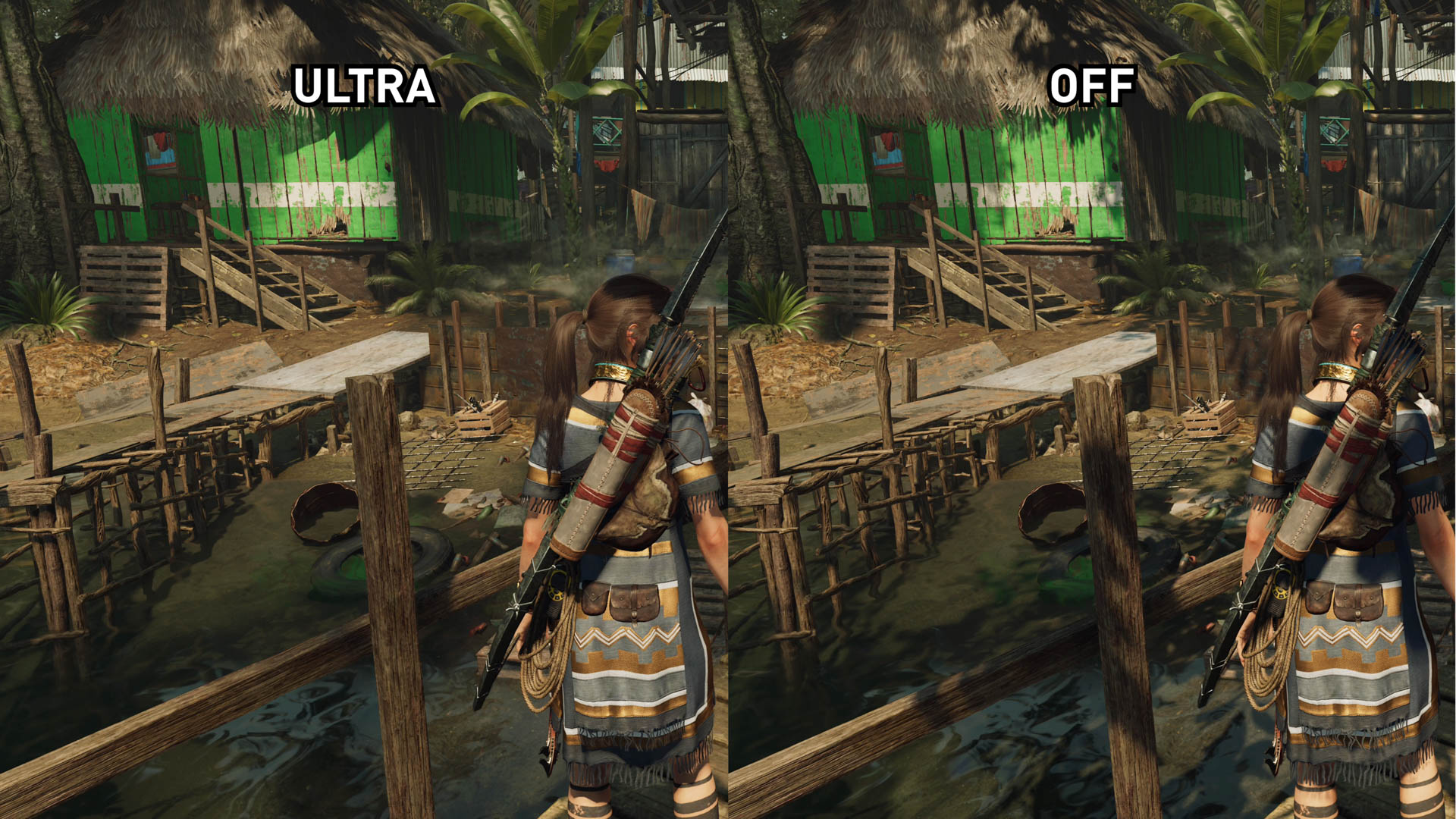
We spotted some other artifacting in the game with ray tracing, again on roofing. In this scene, the shadowing present on the rocks on the left is a lot better with ray tracing on. But ray tracing also introduces these weird patterns into the roof that don't look right.

Looking at the overall quality our thoughts are that ray traced shadows look good in general, but only if you use the Ultra mode. There are too many issues with the high mode, including reduced shadow density and an ugly transition point that makes this mode look worse than ray tracing disabled. The ultra mode has its glitches, but it looks better than ray tracing disabled and definitely more accurate. The medium mode is OK when there are point lights around, but the upgrade is basically non-existent in many outdoor environments.
Because Shadow of the Tomb Raider is a slower paced game with an emphasis on stunning visuals, there's more time to appreciate the improved shadow quality. And in most cases it's not a subtle change, it's a decent upgrade. For a better showcase of the effects in motion you can check out HUB's video footage below.
Performance
As usual, enabling ray traced shadows in Shadow of the Tomb Raider comes at the cost of performance. Developers have put in a lot of time to make sure the game doesn't run as poorly as the original demos, but the performance still isn't great.
We'll start with the RTX 2080 Ti results. Performance was captured using the game's built-in benchmark tool, which is fairly representative of the scenes shown in this article. Across all three resolutions, the hit moving from Off to Ultra is significant. At 1080p performance drops by 39% on average with an even larger 57% hit to 1% lows. Then at both 1440p and 4K you're getting a 41% drop on average.
When factoring in 1% lows which show performance in the most intensive areas of the benchmark, it's typical to see your frame rate cut in half when using the Ultra ray tracing mode, and that is usually what I found in general gameplay in intensive areas. At 4K it was common to sit around 60 FPS with ray tracing off, while a touch under 30 FPS with Ultra ray traced shadows. Ouch.
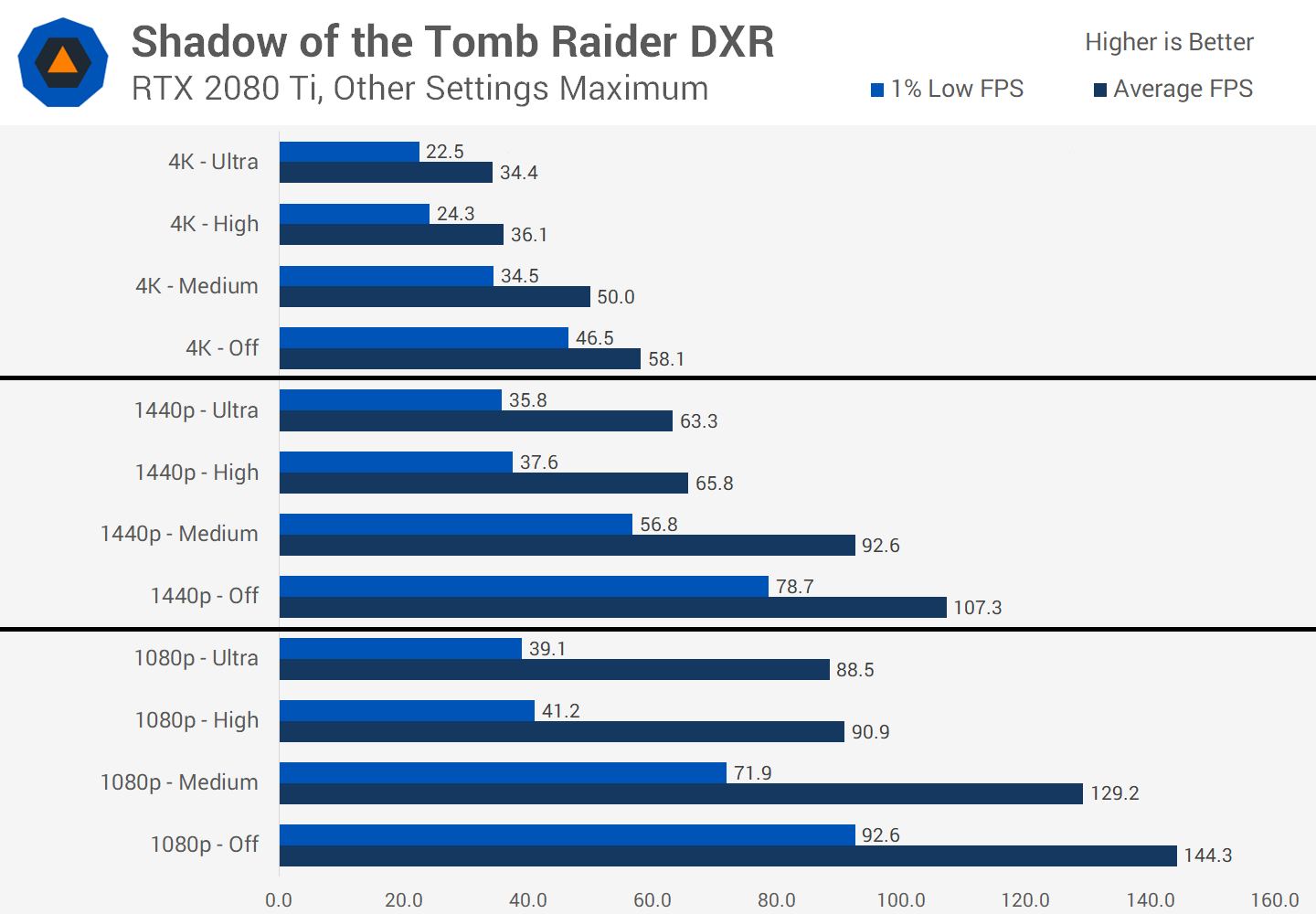
The medium mode doesn't see as much of a drop, a mere 14% at 4K, but it also doesn't provide much of a visual improvement outside of select scenes. Of course, the performance hit is higher than 14% in these specific scenes where point lights come into play, with the benchmark tool going through different areas that may or may not see differences.
With that said, the drop isn't significant in outdoor areas with no point lights, you'll only see maybe 2-3 FPS shaved off, so the good news is you won't be punished when the effect isn't visible.
There's also not much of a difference between the High and Ultra modes, usually about 2-3 FPS at most. But because the high mode looks awful, there's no way I'd use it over the slightly more intensive Ultra mode.
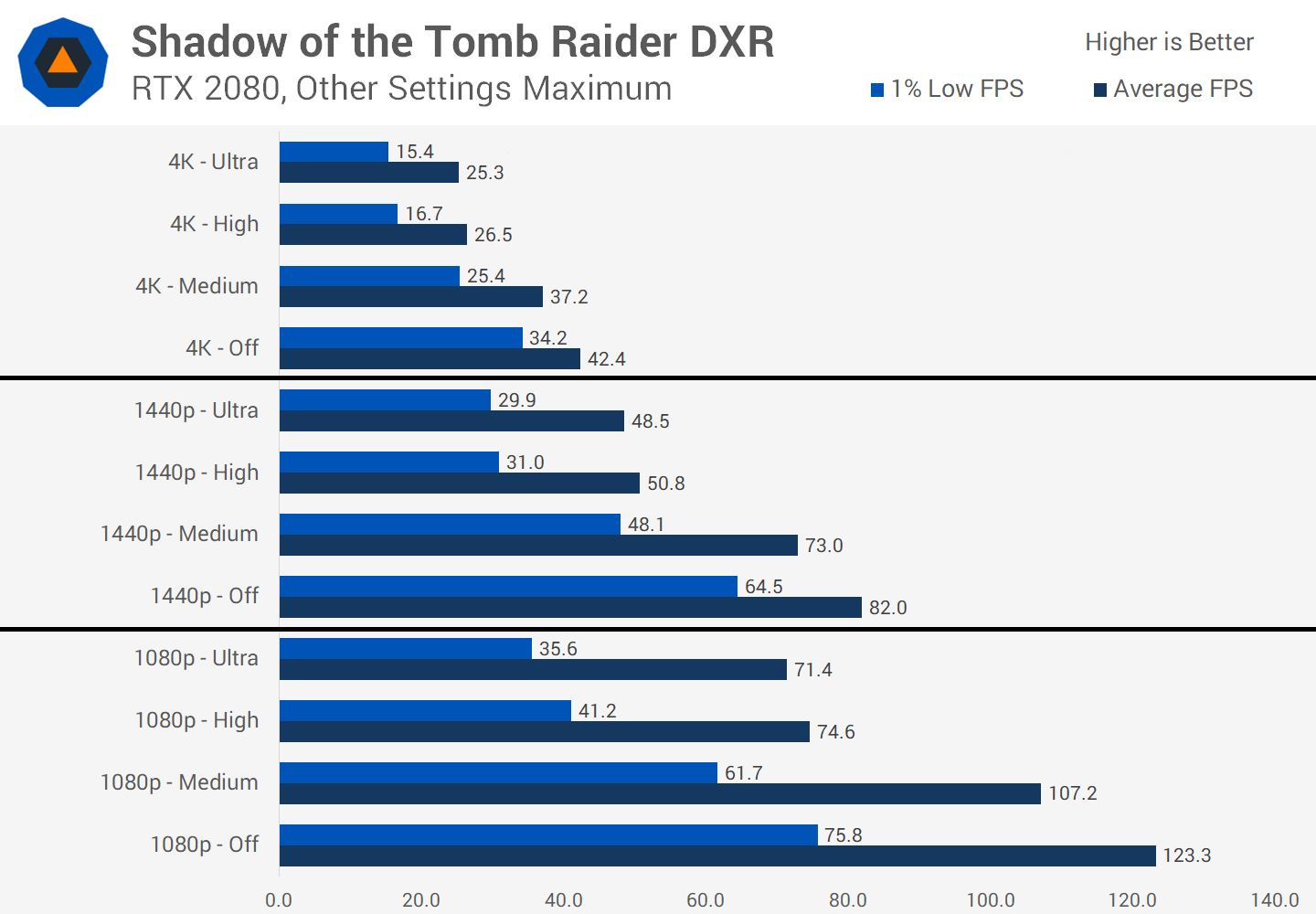
With the RTX 2080 we're seeing similar margins: a 43% reduction in frame rate at 1080p moving from Off to Ultra, 41% at 1440p and 41% at 4K. The RTX 2080 is definitely not powerful enough for ray tracing at 4K, and it's only borderline at 1440p, dropping from an 80 FPS average to below 50 FPS. At this resolution you'll want an adaptive sync monitor.

For the RTX 2070 we only tested two resolutions because it's obvious this GPU and the RTX 2060 can't handle the game at 4K. Once again we're looking at around a 42% drop of FPS at 1440p, and 41% at 1080p. The RTX 2070 is good for a 60 FPS experience at 1440p with ray tracing disabled, but enabling ray tracing sees 1% lows dip below 30 FPS which isn't great. We'd say the card is powerful enough for 1080p with ray tracing, where it can delivers 60 FPS.
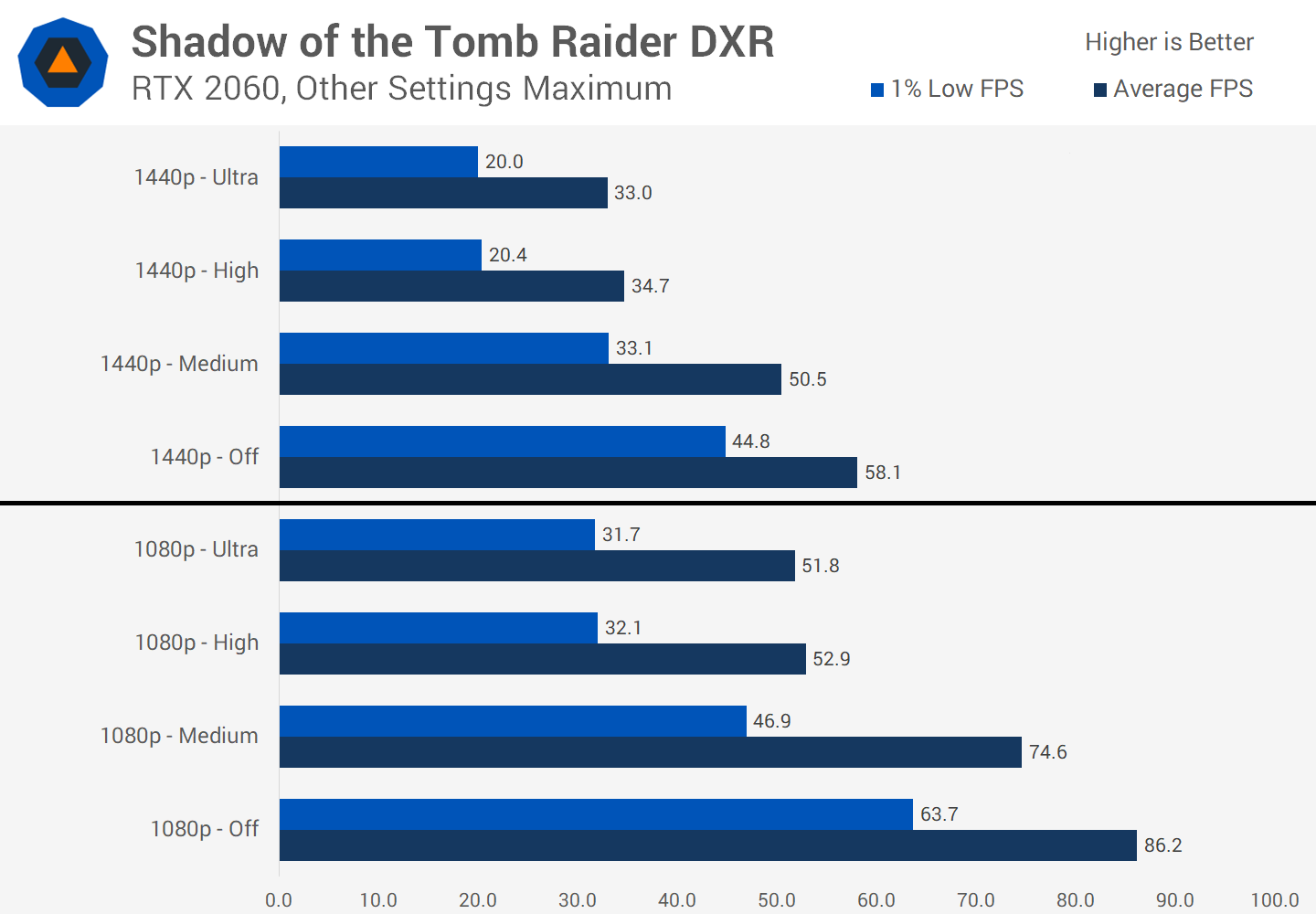
As for the RTX 2060, it's no surprise that it can't handle ray tracing at 1440p: it sees a 45% drop in frame rate, which takes a card that is fine at 1440p without being amazing, to a card that simply can't play the game at a reasonable frame rate. At 1080p it's a better situation, you still see that big drop in frame rates but at around 50 FPS we'd still say the game is playable with RTX on.
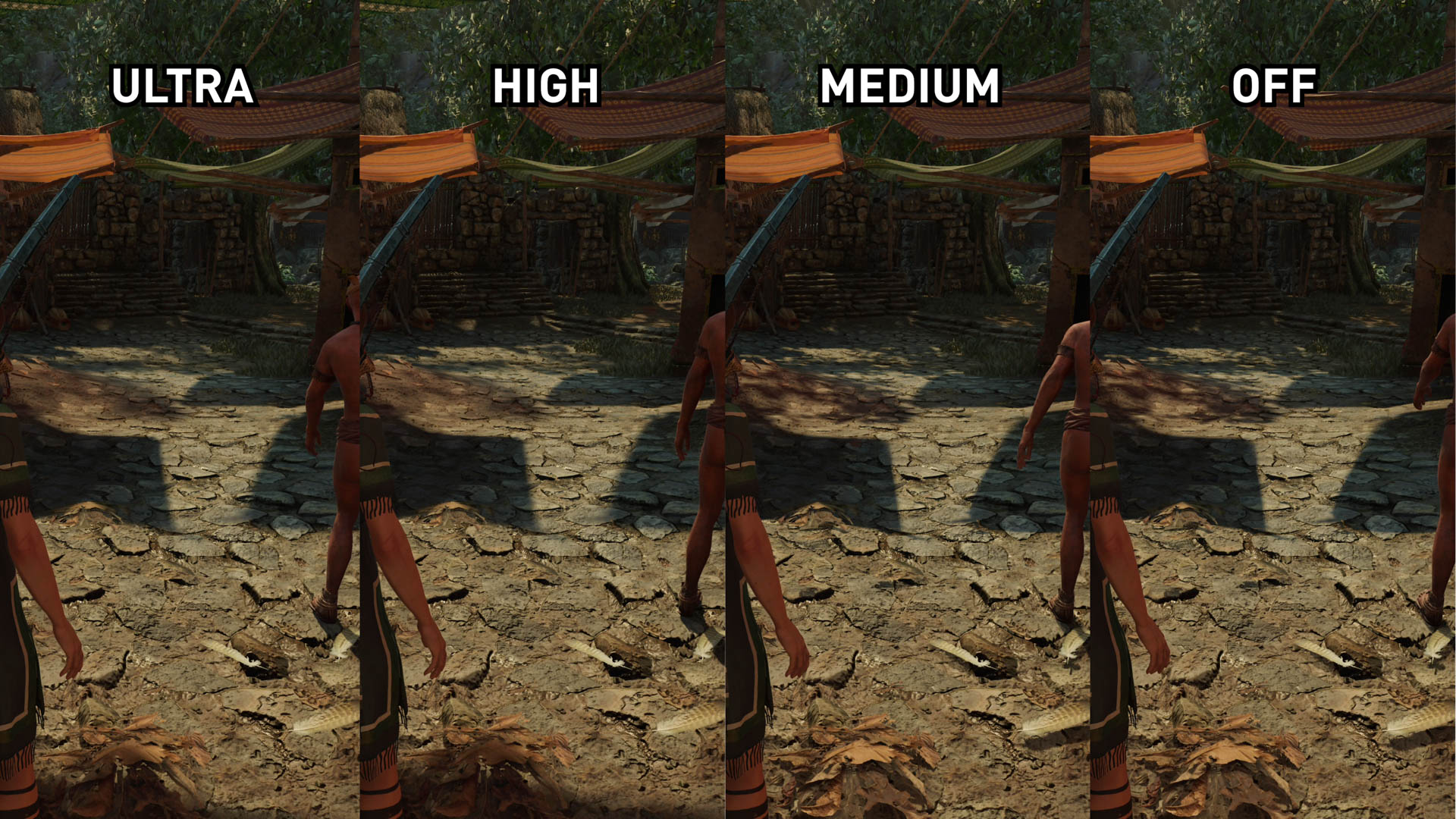
Ray tracing in Shadow of the Tomb Raider once again comes at a big cost in performance. The visuals are very good, so it's not a Battlefield V situation where you get both awful performance and noisy ray traced effects, but we're still talking about having your frame rate significantly reduced. The performance hit is a lot higher than in Metro Exodus, although for a larger visual improvement as well.
Considering the regular, non-ray traced Ultra shadows already look very good, and the game in general looks amazing on maximum settings, we don't think it's worth turning ray tracing on in most situations. Halving your frame rate is a huge hit to take, we're talking at least a 30 FPS reduction, which isn't going to work for most people.
The situations where we could see this hit being worthwhile, is when you have excess performance at your native resolution. So that's with the RTX 2080 and RTX 2080 Ti at 1080p, and the RTX 2080 Ti at 1440p. With those GPUs, you can run the game at over 100 FPS with ray tracing off, so turning it on only brings you down to around 50 FPS or so. It's a big hit, but we're not in console performance territory.
With other combinations we're looking at performance near 30 FPS at times. Take the RTX 2070, for example, would you rather play the game at 60 FPS at 1440p with ray tracing off, or 1080p at below 60 FPS with ray tracing on? We would opt for the former every single time.
Shadow of the Tomb Raider has also received DLSS support, however we've established by now this feature is unnecessary at best in our examinations in other games. From what we've seen in Tomb Raider, DLSS is not as good as the implementation in Metro Exodus, but better than Battlefield V. DLSS is definitely not as sharp as the native presentation, it's blurry in some areas and doesn't let the fine texture work in the game shine.
We'd stick to experimenting with standard resolution scaling instead, where you can achieve better performance and/or better visuals.

It's hard to put into a succinct word how we feel about ray tracing in Shadow of the Tomb Raider. On one hand, the visual upgrade is decent and the game can look great using the Ultra mode. On the other, that comes at a huge performance cost that limits the scenarios in which you would choose to turn ray tracing on.
Ray tracing technology will shine when the performance hit can be significantly reduced or when we have FPS in excess, so the hit becomes irrelevant. For that to happen, we need more powerful ray tracing hardware, so more RT cores, faster acceleration and just more power in general. That's probably one or two GPU generations down the line.
Of all the ray traced implementations we've seen so far, we'd lean towards Metro Exodus as being the best balance of visual upgrades and performance cost. We're not in a situation with any RTX games so far where we could easily recommend using ray tracing or buying a new GPU for that reason alone. For now, think of ray tracing as a bonus for owners of RTX graphics cards.
Shopping Shortcuts:
- GeForce GTX 1660 Ti on Amazon, Newegg
- GeForce RTX 2060 on Amazon, Newegg
- GeForce RTX 2080 on Amazon, Newegg
- GeForce RTX 2080 Ti on Amazon, Newegg
- Radeon RX Vega 56 on Amazon, Newegg
- Radeon RX Vega 64 on Amazon, Newegg
- Radeon RX 570 on Amazon, Newegg
- Radeon RX 580 on Amazon, Newegg

